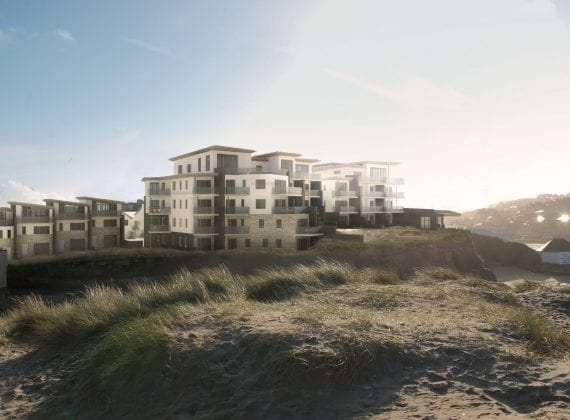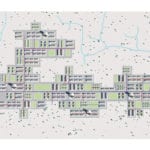Shared Ground Loop Arrays
Kensa’s Ambient Shared Ground Loop Arrays are an award-winning and pioneering approach to Fifth Generation District Heating and Cooling.
The unique Shared Ground Loop Array design allows property owners and developers of two or more dwellings to realise the full potential of ground source heat pumps whilst achieving easier and cheaper carbon compliance for both new builds and existing housing stock, and attracting external funding opportunities for fully funded ground arrays and ultra-low cost heat pumps.
Kensa Contracting offers the UK’s only dedicated comprehensive service for the rollout of Shared Ground Loop Arrays, including design, supply, installation, ownership and operation.
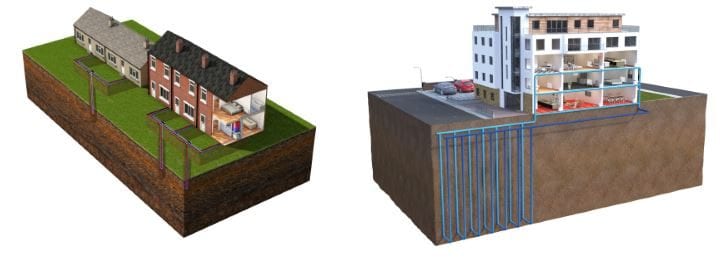
What are Shared Ground Loop Arrays?
Kensa’s Shared Ground Loop Array design features decentralised ground source heat pumps – an individual ground source heat pump per dwelling – connected to a network of pipes which circulate heat at ambient temperatures (-5°C to 20°C) from the ground supplied via clusters of ground arrays.
Mimicking a traditional gas framework, a Shared Ground Loop Array features a series of ground arrays, typically boreholes, linked together to form a heat source for an ambient loop which is connected to multiple properties.
The shared ground loop system transfers ambient temperature low grade heat energy from the ground to individual ground source heat pumps located inside each individual dwelling.
Each Kensa ground source heat pump then upgrades the ground’s heat energy to provide independently controllable heat via radiators or underfloor heating and hot water to a cylinder tank.
How are Shared Ground Loop Arrays different to district heating?
Kensa’s Ambient Shared Ground Loop Arrays (SGLAs) design out the issues of traditional district heating and heat networks, which can be energy wasting, financially front loaded systems, which are complicated, admin heavy, liable to heat provider exploitation, and require large amounts of space for plant room equipment and a backup system in case of failure.
Whilst Fifth Generation District Heating and Cooling (5GDHC) networks remove some of the negatives of traditional district heating schemes, such as reducing heat losses and the need for energy centres, and allow for the introduction of waste heat for more efficient heating and cooling, Kensa’s 5GDHC system featuring SGLAs goes a step further, by providing an individual heat pump to each dwelling and so removing the need for a plant room, complex billing and restrictive energy supplier contracts, safeguarding against whole system failures, whilst utilising a ground array to provide flexibility for integrating additional energy sources and permitting inter seasonal heat storage.
Kensa’s decentralised Shared Ground Loop Array approach results in an even more efficient system as high-grade heat is only generated at the point of use by the ground source heat pump, and only when required; unlike traditional Heat Networks and some 5GDHC systems where heat is generated in a central plant and then circulated inside the building continually, thus leading to heat losses and overheating particularly in risers and communal areas.
| Shared Ground Loop Arrays | Traditional Heat Networks |
| + Ambient loop - no heat losses | - Heat loss through network |
| + No overheating (Read more) | - Overheating in risers & corridors |
| + Independent billing | - Requires split-billing |
| + Independent heat - freedom to switch suppliers | - Single heat energy provider |
| + No plant room - individual heat pump per dwelling | - Large & unsightly central plant |
| + Lowest bills | - ESCO purchases energy |
| + No servicing & minimal maintenance | - Highly specialised servicing |
| + Robust and reliable | - Back up system required |
| + Carbon compliant (Read more) | - Complex funding claims |
| + No emissions (Read more) | |
| + Free passive cooling (Read more) | |
| + Integration with smart controls | |
| + Multiple heat source options | |
| + Integration with waste heat | |
| + Inter seasonal heat storage | |
| + Flexible and scalable | |
| + Planning exempt | |
Ground Source Heat Pumps
A Ground Source Heat Pump offers non combustion space heating, cooling, and hot water, whilst producing approximately three times more energy than it consumes. The heat pump is an electric appliance which transfers heat from the ground or water – a constant and renewable solar heat source, unaffected by air temperatures, compresses it and delivers it to the building at the required temperature for heating and hot water production.
Watch how a heat pump works
Kensa Contracting’s preferred choice of ground source heat pump for Shared Ground Loop Arrays is the Shoebox heat pump from Kensa Heat Pumps.
Developed with Shared Ground Loop Arrays in mind, the unique, ultra-small and quiet Shoebox ground source heat pump is installed inside a dwelling, typically in an airing cupboard.
This non combustion form of heating and hot water makes the Shoebox heat pump a safe choice for installation inside the home, whilst emitting no point of use carbon emissions or air pollution.
explore the shoebox
Heat Sources for Shared Ground Loop Arrays
Shared ground loop arrays can harvest heat for ground source heat pumps connected to ambient loops in a number of ways:
From the ground
- Horizontal collector pipes. Slinkies (coiled pipe) laid in trenches 1 – 2m below ground are a cost effective and quick means of collecting heat. However, a large area of land is needed – approximately 300m2 for an average 3 bed family home.
- Boreholes. Deep holes are drilled to depths of 100m – 250m, and the collector pipes are set in grout to collect the heat. This is particularly useful where large areas of ground are not available.
From water
- Surface water, closed loop. This option is useful for developments next to rivers or lakes, where pond mats are positioned in the body of water to extract the heat.
- Sea water, open loop. Sea water is pumped from the sea and the heat extracted via a land based heat exchanger.
- Aquifer or mine water. Extracts ground water from an underground aquifer or mine, this can produce super-efficient systems since mine water is typically at temperatures of 15 – 18 degrees.
From waste heat
- Waste heat from data centre cooling, heat from underground transport tunnels, air handling units, space cooling, process cooling, PV-t.
- The ambient ground loop array offers flexibility to integrate additional energy sources to act as energy boosters, reducing the cost of the ground array. The ground is the most effective form of energy store / transfer, allowing for inter seasonal storage.
Environmental Benefits
This system offers national planners a way of helping to meet CO2 reduction targets, moving away from fossil fuel, combustion heating to a system which exploits the decarbonisation of electricity production in the most efficient way. Its effectiveness as a low carbon technology can be enhanced when used in combination with other renewable technologies such as;
- Phase change heat storage;
- Town scale battery storage;
- Utilising cheap, low carbon electricity at low demand parts of the day and night;
- No local atmospheric pollution increasing air quality in urban areas.
Electricity Grid Benefits
The energy source for ground source heat pumps – the ground – is stable all year round, which makes it extremely useful for decarbonising the grid. Naturally, ground source heat pumps offer greater grid balancing capabilities than air source heat pumps due to this stable heat source.
By using time-of-use tariffs and thermal storage, ground source heat pumps can be turned on and off to not only balance the grid and reduce peaks and troughs, but also to lower the carbon intensity and running costs of the heat pump; a heat pump is now a key component to a broader household energy system.
By electrifying the grid via ground source heat pumps, overall investment in electrical generation goes down. Once at scale deployment of heat pumps, they will offer even greater grid balancing opportunities.
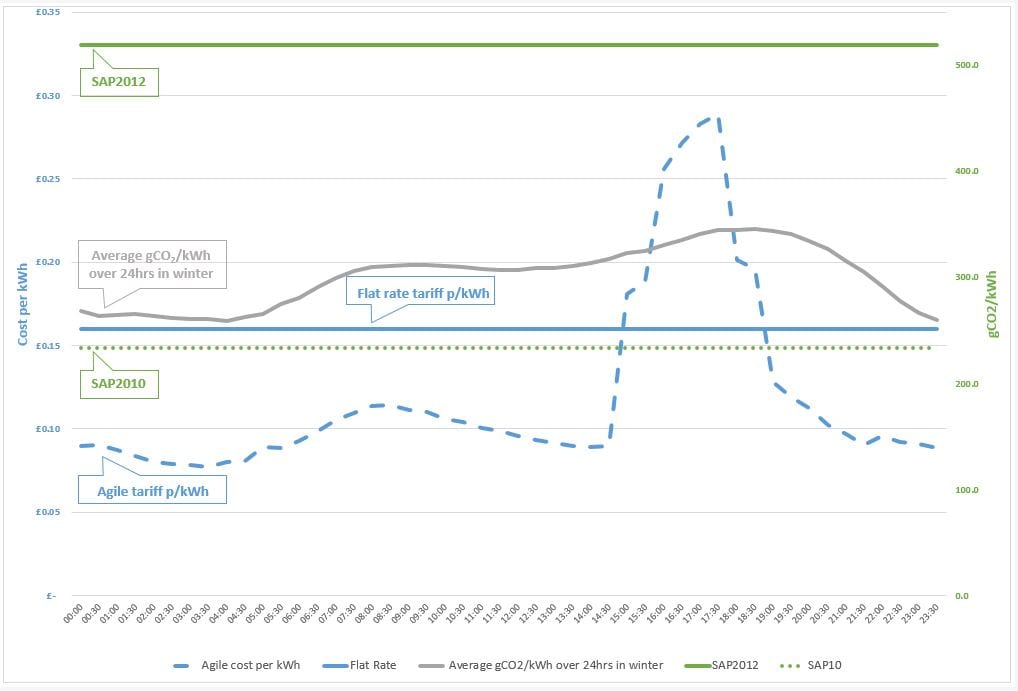 *Daily average cost and carbon graph: Base electricity charges based on Sheffield averaged on the Big Six once a month – average electricity cost per kWh (www.ukpower.co.uk/home-energy/tariffs-per-unit-kwh, www.nottenergy.com/energy_cost_comparison). Octopus Agile Tariff (average over 24hrs). Average CO2/kWh over 24hrs in winter (www.carbonintensity.org.uk)
*Daily average cost and carbon graph: Base electricity charges based on Sheffield averaged on the Big Six once a month – average electricity cost per kWh (www.ukpower.co.uk/home-energy/tariffs-per-unit-kwh, www.nottenergy.com/energy_cost_comparison). Octopus Agile Tariff (average over 24hrs). Average CO2/kWh over 24hrs in winter (www.carbonintensity.org.uk)
Developer Benefits
The individual ground source heat pumps connected to a shared ambient loop offer a straight forward solution to a number of M&E issues;
- Uncomplicated solution which uses existing internal controls and standard plumbing;
- Easier and cheaper compliance with SAP 10 building regulations;
- System architecture is completely scalable and can be installed with project phases;
- Installation does not impact visual appearance and does not reduce kerb appeal;
- Will not add to overheating problems;
- Can offer passive/active cooling;
- Increase useable space in developments which otherwise would need plant rooms;
- Uncomplicated schematics and no need for expensive pipe insulation;
- No requirement for heat meters and admin of providing heat to individual users;
- No expensive maintenance of plant room.
End User Benefits
The home owner or tenant living in the dwelling with a heat pump benefits enormously from;
- The lowest running costs of heating
- Very low maintenance cost
- No annual servicing
- Familiar controls
Peer Reviewed
In light of London’s drive to become a zero-carbon city by 2050, the Greater London Authority (GLA) commissioned a report by Etude into the scope and opportunity for ‘Low Carbon Heat: Heat Pumps in London’. The report features Kensa’s Shared Ground Loop Array scheme at Enfield, and is well-timed to provide an invaluable resource to guide the specification of low-carbon heating in London’s new builds.
The report concludes that:
The communal ground loop with individual heat pumps appears to be the most economic solution of all (at approximately £500/yr) and is also compliant with London’s key objectives in terms of air quality and carbon emissions. It combines several advantages: it is very energy efficient and does not require dedicated heat metering and billing.
Heat pump systems provide the lowest carbon heat for all case studies, though significant differences exist between the various types of heat pump. The lowest carbon heat is achieved by the residential block using ground source heat pumps coupled to a communal ground loop. This system benefits from very small distribution losses due to the ambient flow temperature and relatively high efficiencies of 380% for space heating at 35˚C and 290% for DHW at 60˚C offered by ground source heat pumps. Greater London Authority (GLA), ‘Low Carbon Heat: Heat Pumps in London’ (September 2018)
In Theory
This Kensa animation depicts the key stages for the installation of Kensa Shoebox ground source heat pumps into individual flats in tower blocks, connected to ambient shared ground loop arrays (boreholes).
In Practice
This Kensa time lapse shows the drilling of 25 shared ground loop boreholes for Kensa Shoebox heat pumps in 49 bungalows owned by Stonewater Housing in Weobley (read the case study here).
Kensa’s Shared Ground Loop Arrays are suited to as few as two properties, although they are most common in medium to large scale projects.
Click the links below to learn more about these typical applications:
Related Content
Frequently Asked Questions (FAQs) about Kensa Shared Ground Loop Arrays (SGLAs) Got a question about shared ground loop arrays? Read through some of the most common questions below. If you cannot find an answer to your question please contact us on 0845 680 4328 or send us your project details for a bespoke quote.
The Kensa Shoebox Heat pump is a small, quiet, MCS-accredited and British-made ground source heat pump specifically designed to provide both space heating and domestic hot water in new build and retrofit properties which require a load of 3kW to 6kW. The Shoebox Heat Pump is the market’s smallest heat pump. Benefiting from Kensa’s award…
This Kensa Contracting commissioned animation depicts the key stages for the installation of Kensa Shoebox ground source heat pumps into individual flats in tower blocks, connected to shared ground loop array boreholes. For more information on this application click here. *Please note: the Non-Domestic RHI funding stream mentioned in this video has now expired. Explore…
Kensa Contracting specialises in the design and delivery of scalable, low cost and low carbon Fifth Generation District Heating and Cooling (5GDHC) networks featuring ambient Shared Ground Loop Arrays and decentralised ground source heat pumps.
Kensa’s funded arrays enable house builders and developers to install ground source heat pumps for the price of air source heat pumps.
Summary: The Greater London Authority (GLA) has published a report into the scope and opportunity for ‘Low Carbon Heat: Heat Pumps in London’. The report compares various air source, direct electric, gas and CHP configurations in new build houses, and concludes that shared ground loop arrays are the most efficient, lowest carbon, and lowest cost solution. Kensa’s…
Summary: Cost to comply with emissions reduction targets to increase for developers who traditionally specified gas, in particular gas CHP, and decrease for those specifying shared ground loop array ground source heat pumps. GLA heat pumps report identifies shared ground loop arrays with individual ground source heat pumps as the lowest carbon & lowest cost…
The UK’s pioneer of domestic district ground source heat pump systems, Kensa Contracting, has secured the contract to deliver England’s largest shared ground loop array heat pump system with ENGIE.
Summary: Summers are getting hotter! Extreme heat is responsible for record numbers of emergency hospital admissions. Royal College of General Practitioners (RCGP) ceased investment in all fossil fuel companies as part of a drive to combat climate change and hotter summers and lower air pollution-related hospital admissions. Well-insulated and glazed modern buildings featuring central plant…


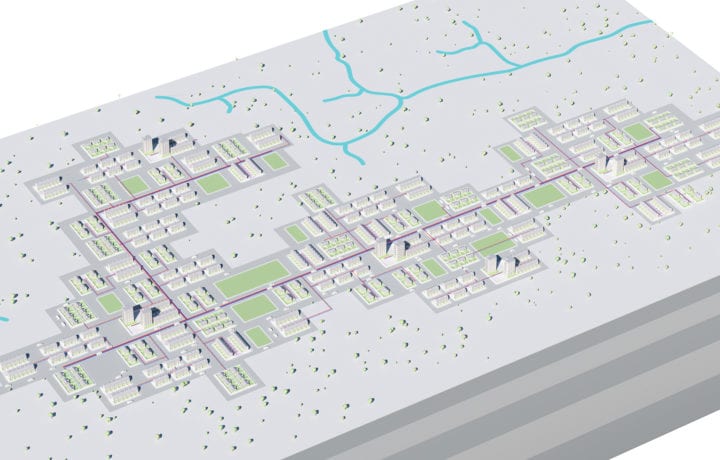
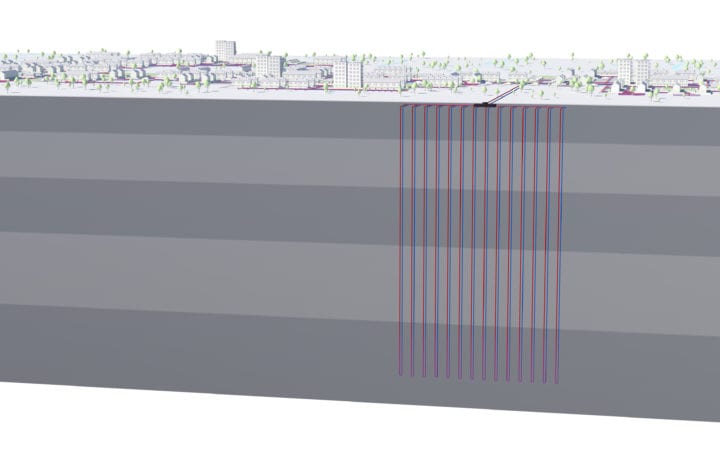
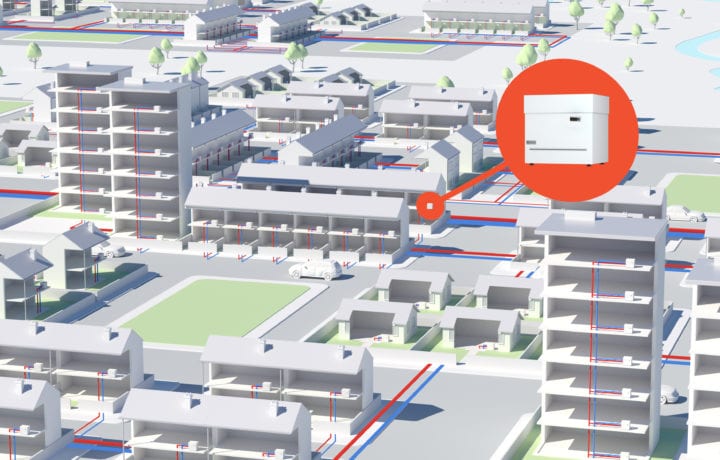
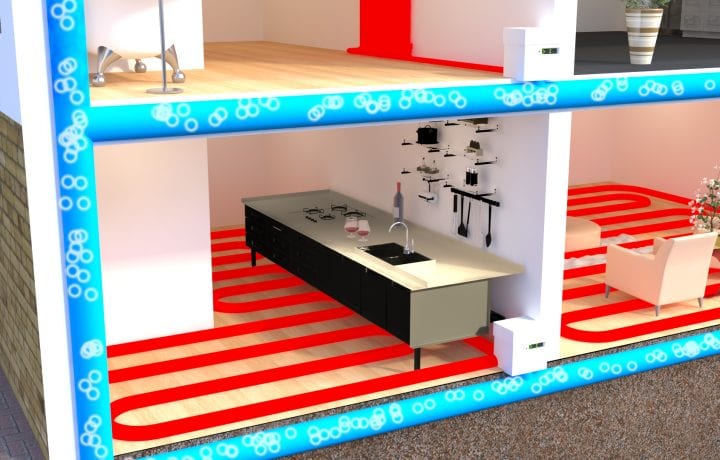
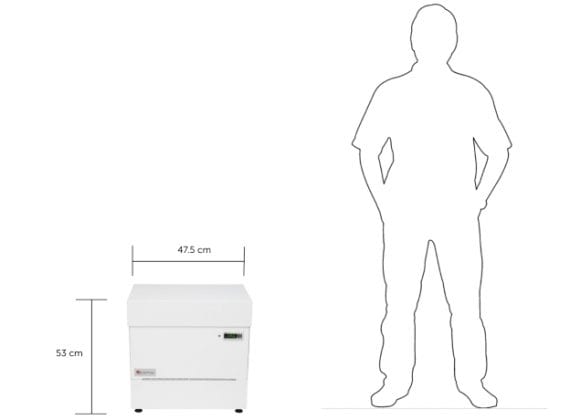
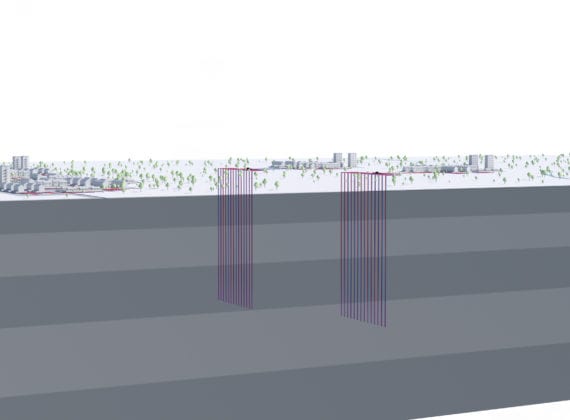
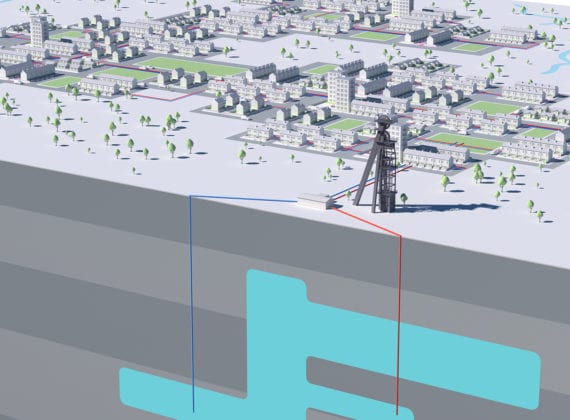
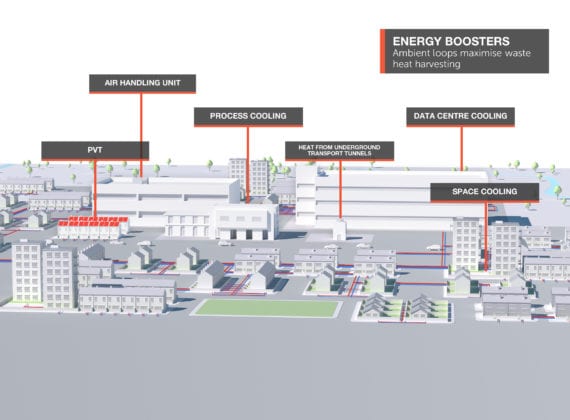
 *Daily average cost and carbon graph: Base electricity charges based on Sheffield averaged on the Big Six once a month – average electricity cost per kWh (www.ukpower.co.uk/home-energy/tariffs-per-unit-kwh, www.nottenergy.com/energy_cost_comparison). Octopus Agile Tariff (average over 24hrs). Average CO2/kWh over 24hrs in winter (www.carbonintensity.org.uk)
*Daily average cost and carbon graph: Base electricity charges based on Sheffield averaged on the Big Six once a month – average electricity cost per kWh (www.ukpower.co.uk/home-energy/tariffs-per-unit-kwh, www.nottenergy.com/energy_cost_comparison). Octopus Agile Tariff (average over 24hrs). Average CO2/kWh over 24hrs in winter (www.carbonintensity.org.uk)